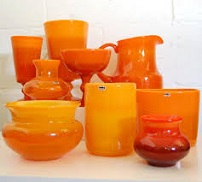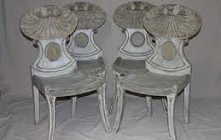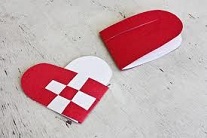Interested in vintage Swedish glass? Read our guide for the history behind classic glass art works from Sweden…
The term vintage Swedish glass usually refers to objects that have been crafted from glass that had its origin in the country of Sweden. The skill of Swedish glassmakers as well as Swedish artists who craft their creations from glass has made the term vintage Swedish glass applicable to both the basic material and the ultimate creations that have been formed by the skilled hands of a talented artist.
The term vintage is appropriate, because like wine, vintage glass comes to be through a combination of basic material (the grapes) and extensive skill (the vintner’s art).
Many examples of vintage Swedish glass date from the 1920’s into the middle portions of the 20th century. Vintage Swedish glass pieces got their start in the 20’s when a group of Swedish artists came to the realization that the medium of glass could attract attention to a heretofore neglected country whose greatest claim to fame might have been dynamite or the safety match.
Things really got going when two glass artists who were both trained as painters began creating objects d’art on behalf of the company known as Orrefors glassworks. We are referring, of course to the dynamic duo of Simon Gate (1883-1945) and Edward Hald (1883-1980). When a Simon Gate creation called the Bacchus Bowl was awarded first prize at the 1925 Paris exhibition vintage Swedish glass gained its initial regard and the way was made clear for a tradition of fine art work in glass that stretched out beyond the lives of its pioneer personages.
The tradition of artistic experimentation continues to this day in the works of several young and contemporary artists. Although their work may not have achieved the right to be called vintage as yet it partakes of the spirit of creation and certainly shows promise.
Working at the Kosta Boda company the country’s newest design stars are Asa Jungnelius, a Stockholm native who combines pop-art caprice with gender-identity polemics, in producing everything from sculpted lipsticks to hand-painted stemware that stretches the Scandinavian folk art tradition to startling extremes.
Ludvig Löfgren, who is both her colleague and her companion, is gaining a reputation for crystal skulls and gothic (in the modern sense), web-patterned vases.
The work of all four of these artistic pioneers is not confined to the museum alone. Their creations serve a dual role of a practical and aesthetic nature, as glassware always has. It is only fitting that aside from the confines of the museum these works are readily available in shops and galleries as well.





